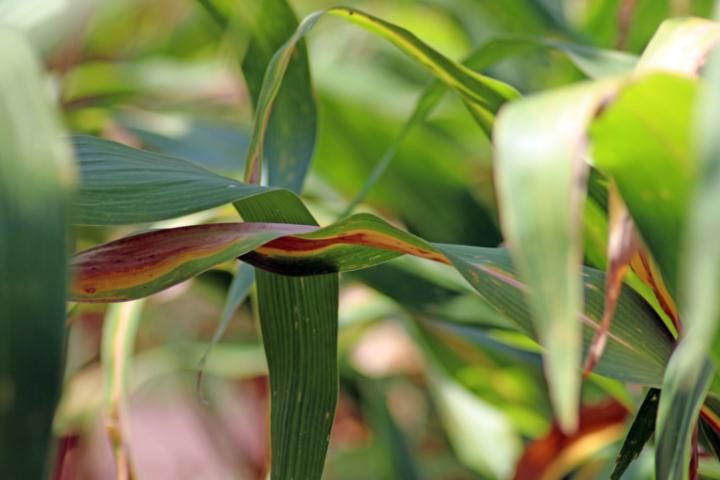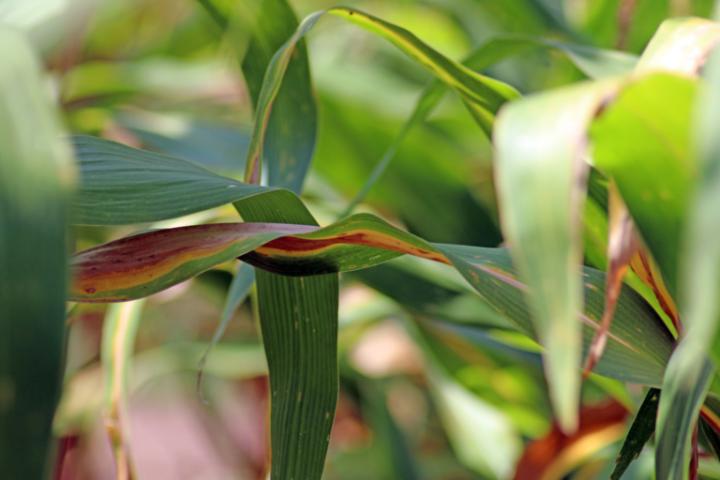
Credit: Clemson University College of Science
Weak corn and sorghum stalks cause the loss of about 20 percent of the crops in the U.S. annually, and Rajan Sekhon and Christopher McMahan of Clemson University's College of Science are part of a multi-university consortium trying to find out why. They are working with approximately one-third of a four-year, $6 million grant from the National Science Foundation for the interdisciplinary study.
Corn and sorghum play a vital role in a world where food production must double by the year 2050 to sustain the ever-growing human population. The crops function not only as food for humans and animals, but also are used for biofuels and various industrial products. In many underdeveloped nations, corn and sorghum are primary dietary staples and two of the top-traded food commodities, among other grains, such as rice, wheat and soy.
However, the production of these crops and their roles in global food security are threatened by disease, climatic factors and – most interestingly to Sekhon and McMahan – the slowly progressing issue of stalk breakage.
"We're not really any closer to understanding the genetics of stalk strength than we were 25 years ago using traditional methods," said Sekhon, an assistant professor in the department of genetics and biochemistry. "The reason is because we, biologists, have been working on this problem in isolation with little collaboration across disciplines."
The idea for this project was born when Sekhon learned about the research of scientists Daniel Robertson of the University of Idaho and Douglas Cook of NYU Abu Dhabi during a seminar on the structural mechanics of crops three years ago at Clemson University. There, Sekhon found an opportunity to assess stalk breakage, also known as stalk lodging, from a variety of research approaches.
"The corn stalk, for us as biologists, we can dissect it and study different cell types, but for engineers, it's like a beam. So they apply this beam theory and start trying to understand what provides strength to the stalk using applied mathematics," Sekhon said. "Daniel and Doug were working on stalk lodging from the structural engineering angle, and I was working from the genetics angle, so obviously we had common interests."
From that moment, the collaboration has grown to include engineers, geneticists, horticulturists and mathematicians from three institutions: Clemson University, the University of Idaho and the University of Kentucky. Seth DeBolt, the lead principal investigator at Kentucky, provided a key missing piece to the puzzle with his strong expertise in cell shape and cell wall structure.
As a team, the consortium's goal is to break down the complex trait of stalk lodging – which is explained by a multitude of genetic and environmental factors – into many smaller, intermediate traits that are easier to grasp at both the genetic and structural levels. For example, the strength of a corn stalk is dependent on a number of characteristics, including its number of parenchymal cells, which store water and energy for the plant, as well as the thickness of the rind or the diameter of the stalk. It is simpler to find the causative genetic marker for each of these traits on an individual basis than it would be to consider them all as working in coordination to cause stalk lodging.
The engineers of the study will simultaneously take these measurements and devise a structural engineering model that explains just how strong a stalk needs to be – parenchymal cells, rind thickness, stalk diameter and a number of other features considered – to avoid stalk lodging.
McMahan, whose skill in mathematical modeling and statistical computing rounds out the study's design, is the last point of contact for the researchers. Once the genetic and engineering data is gathered, they will be sent to McMahan for input into a statistical model that will inform the researchers which traits are significant in stalk lodging and which are not.
"Once we do that, I'll be going back to Rajan and some of the others to show them what we found, how we can validate and what is the next step. We'll try to figure out how to create that next step and see what comes out of it. It's a full cycle that is going to be made several times before the four years is up," said McMahan, an associate professor in Clemson's department of mathematical sciences.
The grand exercise, he says, will come at the end of the project when all of the variables are condensed into one cohesive mathematical unit that can predict stalk lodging without having to conduct the extensive field work experiments used in the team's current study.
From the genetic perspective, the team's results can take one of two routes. On the fundamental side, Sekhon and DeBolt can conduct further research to understand the signaling pathways and other biological phenomena that influence the intermediate traits uncovered by the study. On the applied side, the implicated genes identified by the study can be supplied to corn and sorghum breeders, who will then selectively breed their plants against those traits to increase grain yield.
Sekhon said this research provides a tremendous opportunity not only for faculty to work across disciplines, but for students to diversify their research skills.
"I think that's where the strength of this proposal is," Sekhon said. "We'll be developing this new generation of students who will have not just a solid understanding of genetics, but they'll have a very decent understanding of mathematics and structural engineering, as well."
"That's literally the forefront of science these days," McMahan added. "The idea that you can go into your office, shut the door and produce scientifically meaningful results is no longer possible. You have to collaborate. The slight difference here is that we are fully exploring with all of the machinery that we could possibly bring to the problem – agriculture, biology, chemistry, engineering, statistics, mathematics, genetics, genomics – and integrating it that way."
The pair are also working together to team-teach a newly developed graduate class at Clemson University, statistical genetics, which was offered for the first time this semester. Sekhon and McMahan give credit to their collaboration as having fostered this opportunity for Clemson students.
###
This material is based upon work supported by the National Science Foundation under award No. 1826715. Any opinions, findings and conclusions or recommendations expressed in this material are those of the authors and do not necessarily reflect the views of the National Science Foundation.
Media Contact
Hannah Halusker
[email protected]
864-415-1523
@researchcu
http://www.clemson.edu
Original Source
http://newsstand.clemson.edu/mediarelations/multidisciplinary-team-tackles-agricultural-threat-to-global-food-security/





